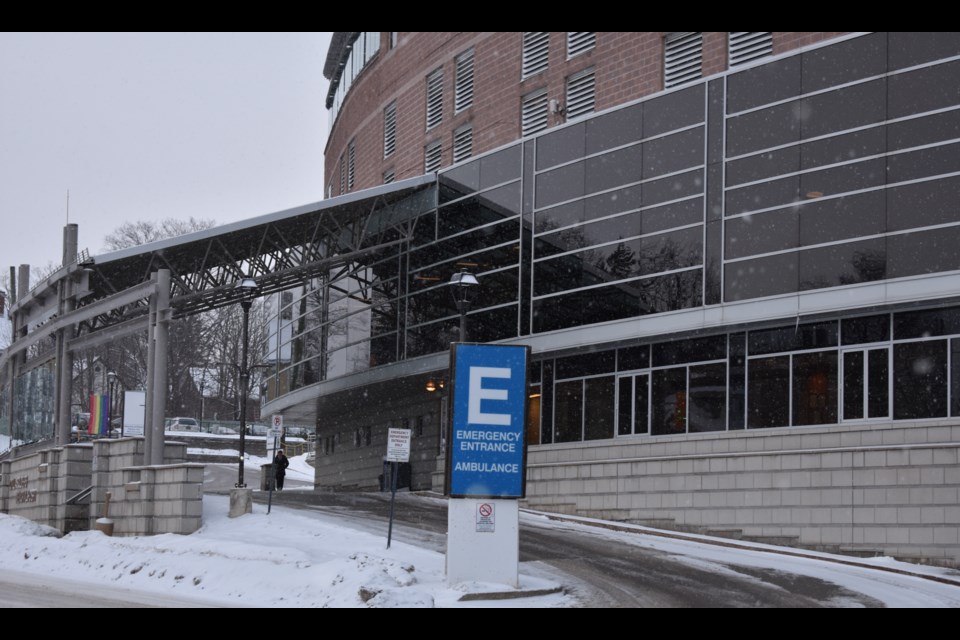Officials from Orillia Soldiers' Memorial Hospital (OSMH) are hoping the prescription for improved health care in the city includes a new hospital and many options, including a partnership with an academic facility, are being explored.
Carmine Stumpo, the hospital's president and CEO, along with key OSMH staff members, briefed the public about the quest for a new hospital and other local health-care issues at Wednesday's virtual 'fireside chat' with the community.
While talking about the Start Today, Serve Tomorrow campaign, Stumpo stressed the urgency for a new hospital has grown substantially over the “last little while.” The hospital is now seeing, on average, around 1,200 births per year.
“That number has increased dramatically,” Stumpo says. “It’s a sign of a growing and healthy community and people choosing Orillia and the surrounding area to raise a family.”
Between 2016 and 2021, Simcoe County’s population grew by 11.2 per cent — double the provincial average. OSMH now has an occupancy rate of 114 per cent, the highest among medium and large-sized hospitals according to the Ontario Hospital Association.
“That is a profoundly important statistic,” Stumpo said. “That is a reflection based on independently generated data that shows we are at our capacity and beyond.”
Including off-site beds, OSMH is operating at 141 per cent of its baseline funded bed count. It is operating with 213 beds, which was at one point the projected bed need for 10 years from now, Stumpo explained. The updated projections reflect an increased need for 50 additional beds.
“These projections will only increase over time as the population grows and the health needs of our community grow in parallel," he said.
Stumpo says some of the hospital’s most critical care services are operating out of some of the hospital’s oldest infrastructure as most of the hospital’s wings are between 50 to 100 years old.
“We are constantly dealing with infrastructure failure within this organization,” he said.
Stumpo says it’s time to move forward to the next steps of planning for a new hospital which will increase bed and care capacity, the number of ICU and inpatient beds, and provide more services to women and children of the community.
Once a new hospital is constructed, which "by a rule of thumb" can take about 10 years, Stumpo estimates, the existing Community Tower can be renovated into a reactivation care centre. The centre would act as a communal resource for neighbouring hospitals in the region with 150 transitional beds for shared capacity.
While Stumpo says the location for a new Orillia hospital is undetermined, he says they are exploring a lot of different options.
“We are actively exploring a few with the concept of a partnership with an academic facility,” he said. “We know that health human resources is our No. 1 challenge. Having those affiliations to academic centres means we can grow our own more effectively.”
Stumpo says OSMH is looking to obtain a capital planning grant from the Ontario government in the spring, receive approval for the next steps of planning, and continue to receive government support as the project progresses.
Stumpo encourages the community to visit starttodayosmh.ca to send a letter of support to Health Minister Sylvia Jones and Simcoe North MPP Jill Dunlop.
“Let them know how important this is for our community and the region we serve to have a new hospital as we plan the next generation to come,” he said.
Melanie Moore, Director, Integrated Planning & Co-Director for the Couchiching Ontario Health Team, says the local care clinic on hospital property, which was first established in 2020 during the COVID-19 pandemic, has been a success for the roughly 22,000 people in the region who don't have a family doctor.
“We provide episodic care where we might not attach you to a clinician,” she explained. “For folks who are unattached, we will be able to support and see you through a journey of perhaps disease management or something that needs to be seen outside of the emergency department to provide the right care in the right place.”
With local residents going without a family care provider for up to three years sometimes, Moore says episodic care has proven to be pivotal for the community. It has already diverted over 507 visits from the ER this year, she explained.
The clinic has also taken 120,000-plus swabs for COVID 19, administered 20,000-plus COVID vaccinations, and completed more than 15,000 COVID assessments. Clinicians from the clinic have also gone out into the community to care for patients in long-term care homes, retirement homes, and patient homes, Moore explained.
Malcolm Morum, a clinician and partner of the clinic, says the patients are appreciative of the care they receive.
“They appreciate the fact that we work in a collaborative model,” he said. “They are able to see me, may be able to bring their children as well, and are also able to see family doctors and connect with the nurses there who are still doing COVID swabs and immunizations.”
Morum says the clinic should continue to become an essential part of the community, especially for those who are without a primary care provider.



